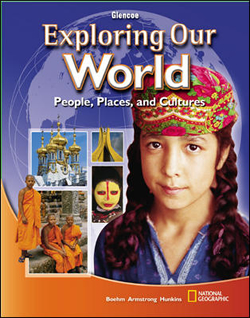
Exploring Our World: People, Places, and CulturesChapter 22: Physical Geography of South AsiaChapter OverviewsSouth Asia includes the countries of India, Pakistan, Bangladesh, Nepal, Bhutan, Sri Lanka, and the Maldives. Its varied landscape includes the highest mountains in the world as well as lowlands that are just above sea level. The Himalaya Mountains are the highest in the world. The mountains of South Asia grow a bit taller every year due to tectonic plate movements. These movements also cause earthquakes in the region. Luckily, mountains and deserts in South Asia are not heavily populated. Just south of the mountains are plains through which the region’s important rivers flow. These rivers are the Indus, the Ganges, and the Brahmaputra. Southern South Asia contains two plateaus, the Deccan and Karnataka. The Karnataka contain fertile soil and rain forest areas. Sri Lanka and the Maldives are the island nations of South Asia. South Asia has few natural resources. Although there is some farmland in India and Pakistan, most farmers in South Asia barely earn a living. India has most of the region’s mineral resources, and Pakistan also has some minerals, especially limestone. The countries of South Asia have had to import oil for energy, but hydroelectric power is growing in importance. The climate of South Asia is marked by contrasts—heavy rainfall during some parts of the year, extreme dryness in others. Monsoons bring needed rain to many areas but also bring the threat of flooding. At other times of the year, the region suffers water shortages. Its growing population demands freshwater, which is in short supply, and the increase in water pollution threatens the region’s important rivers. Air pollution is another challenge in parts of South Asia. The high concentration of people means more automobiles, and more exhaust fumes. Some areas of South Asia have tropical climates, which receive the heaviest rainfalls from the wet monsoons. Because the wet monsoons do not reach all of South Asia, some areas have dry climates; the Thar Desert is surrounded by a steppe that also remains dry. |  |















